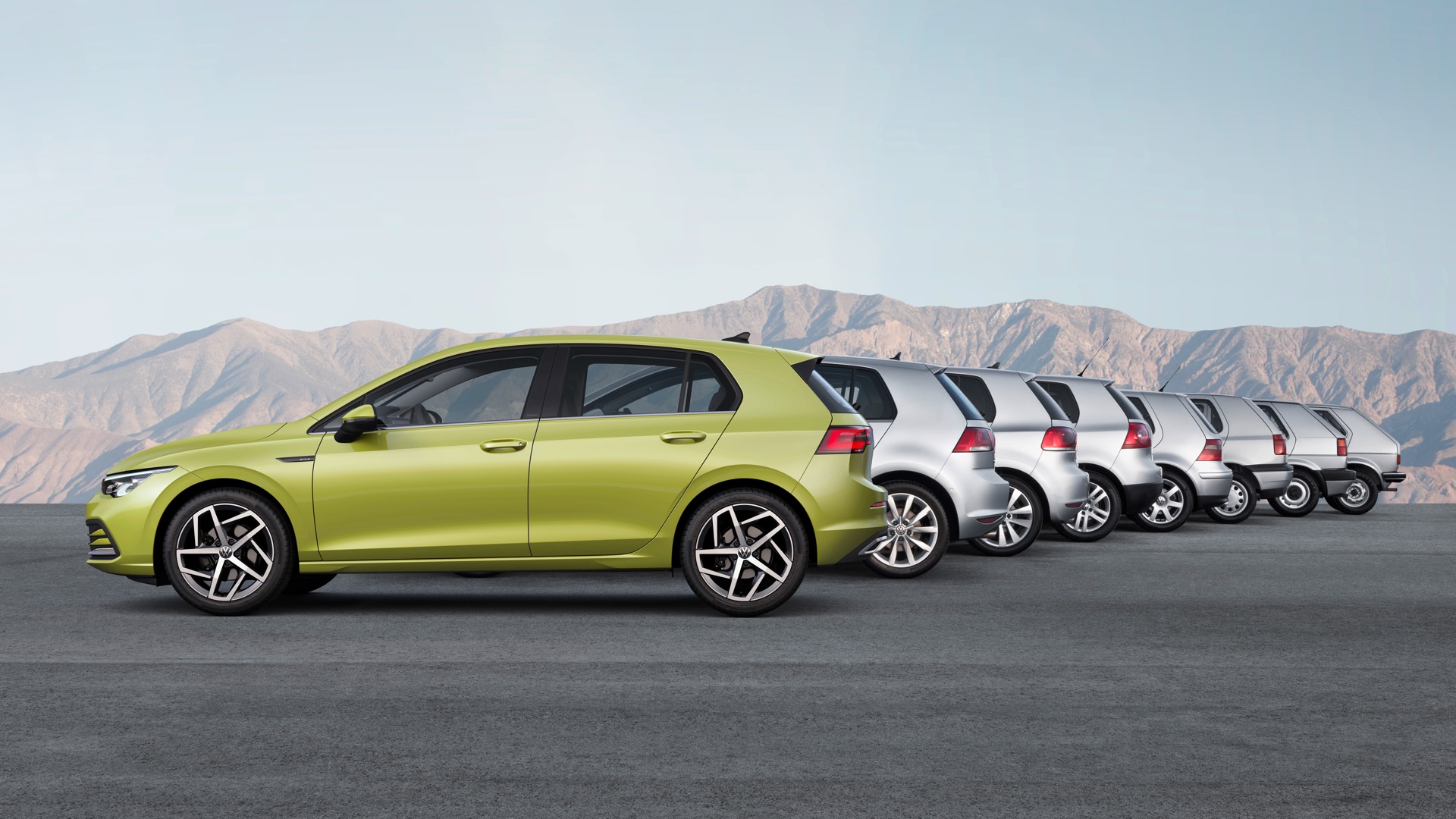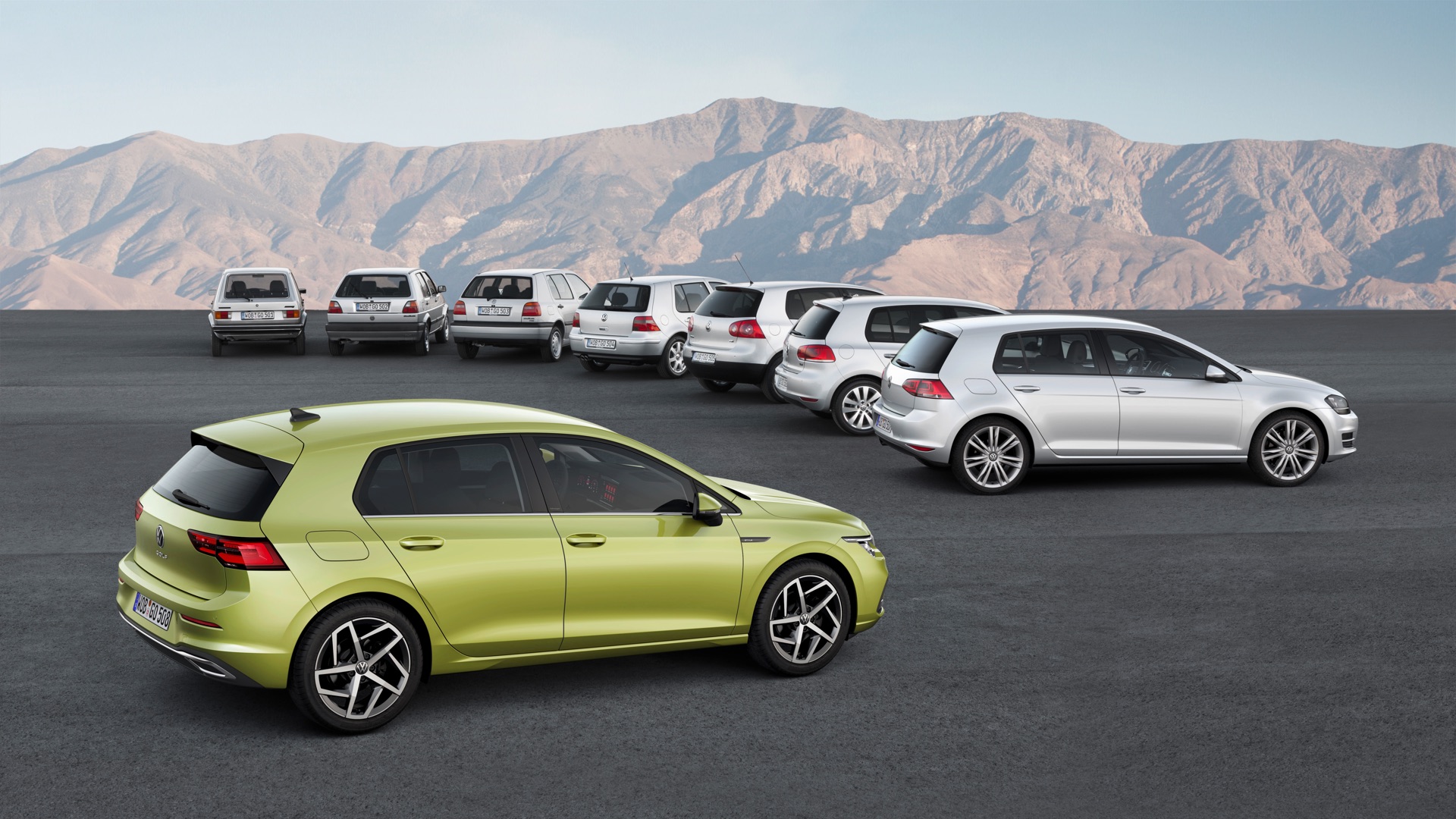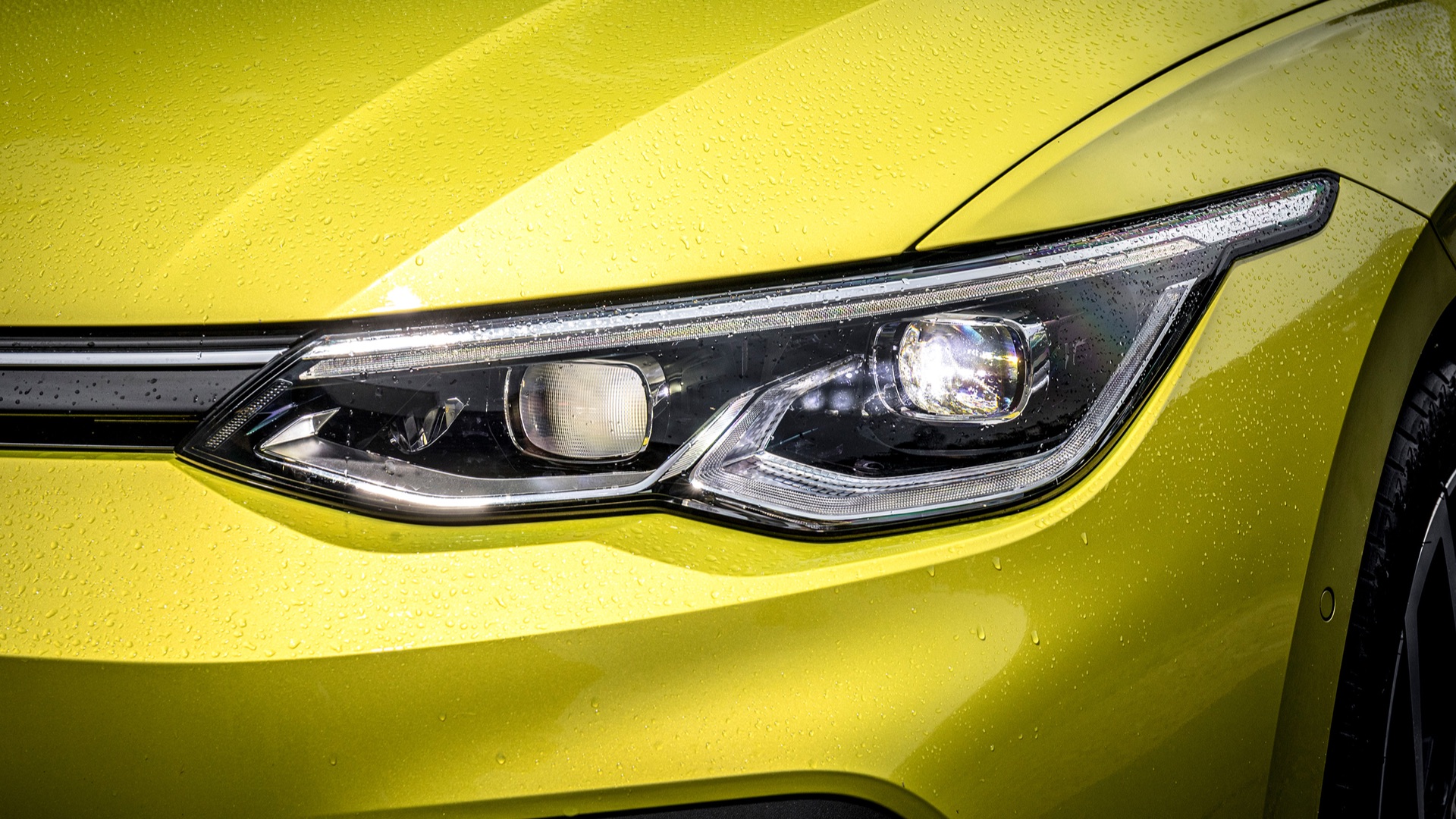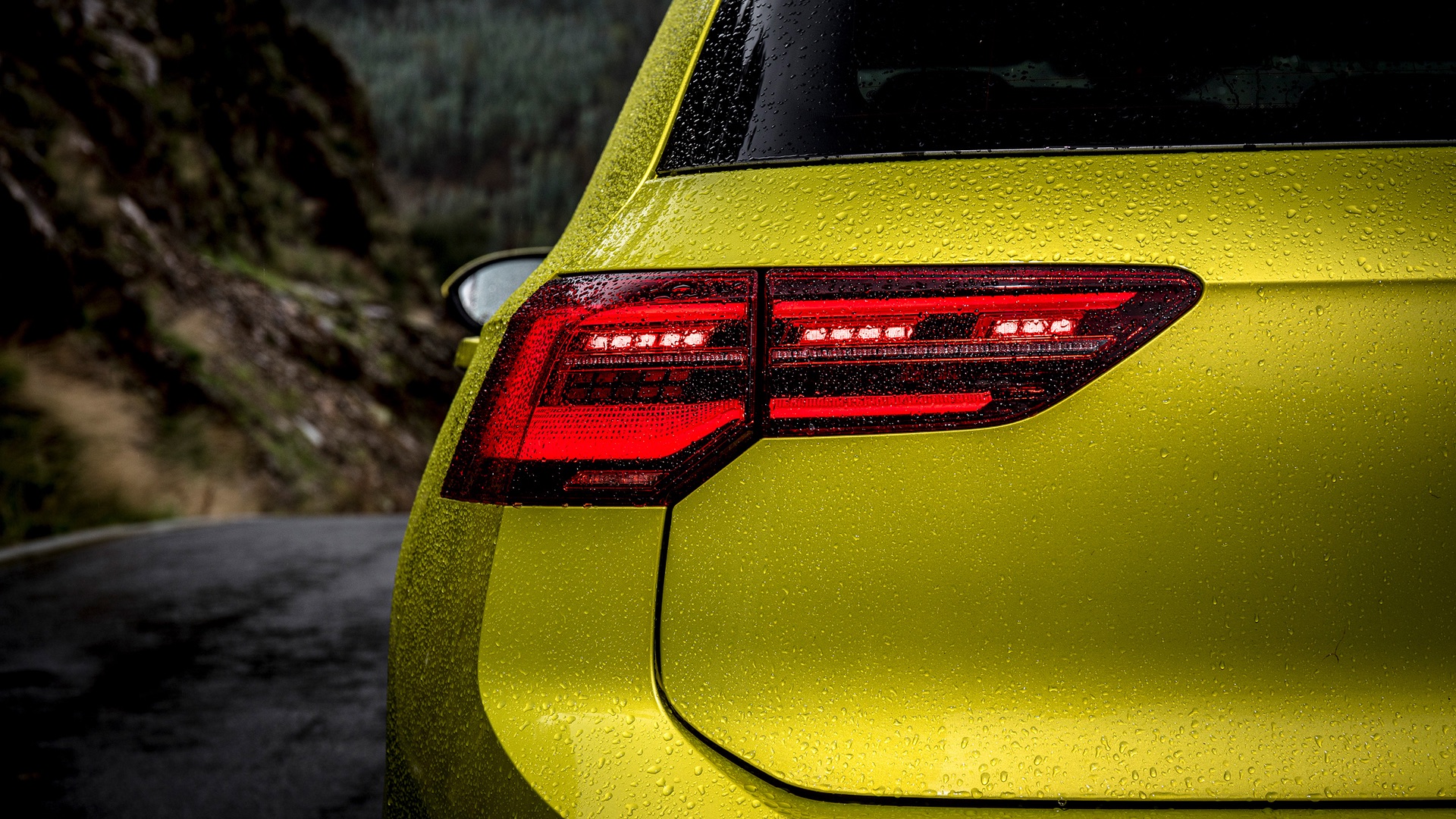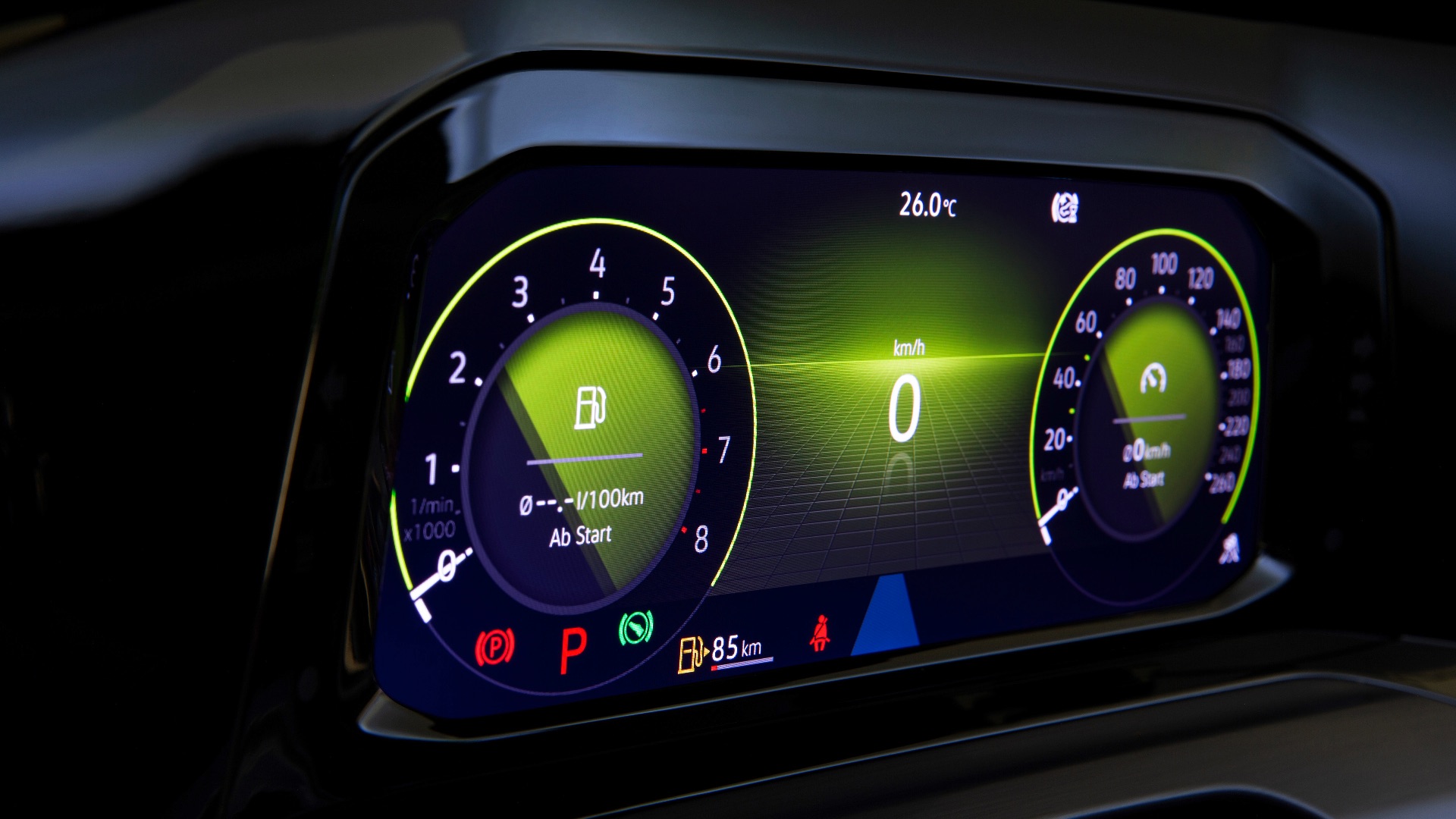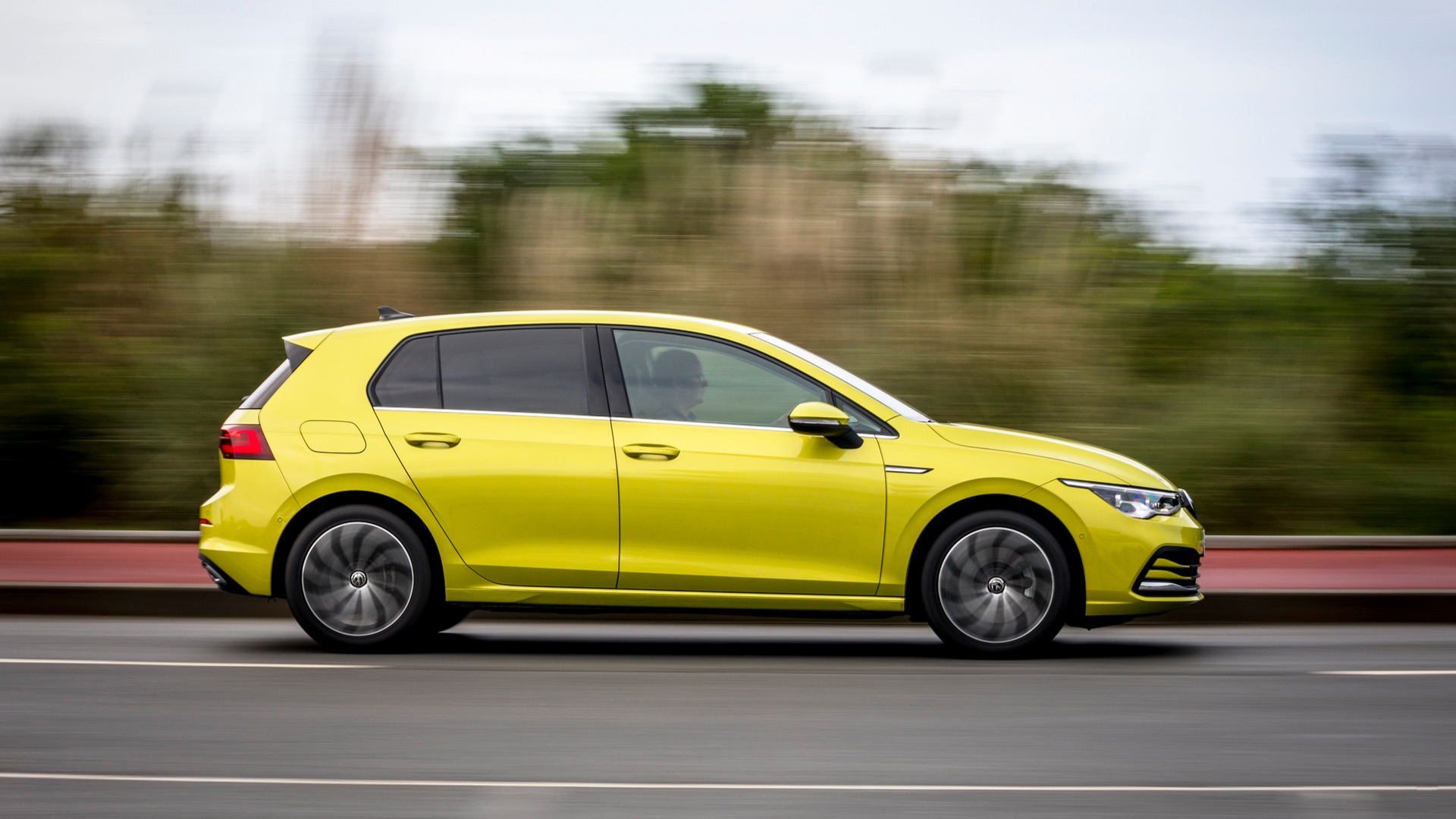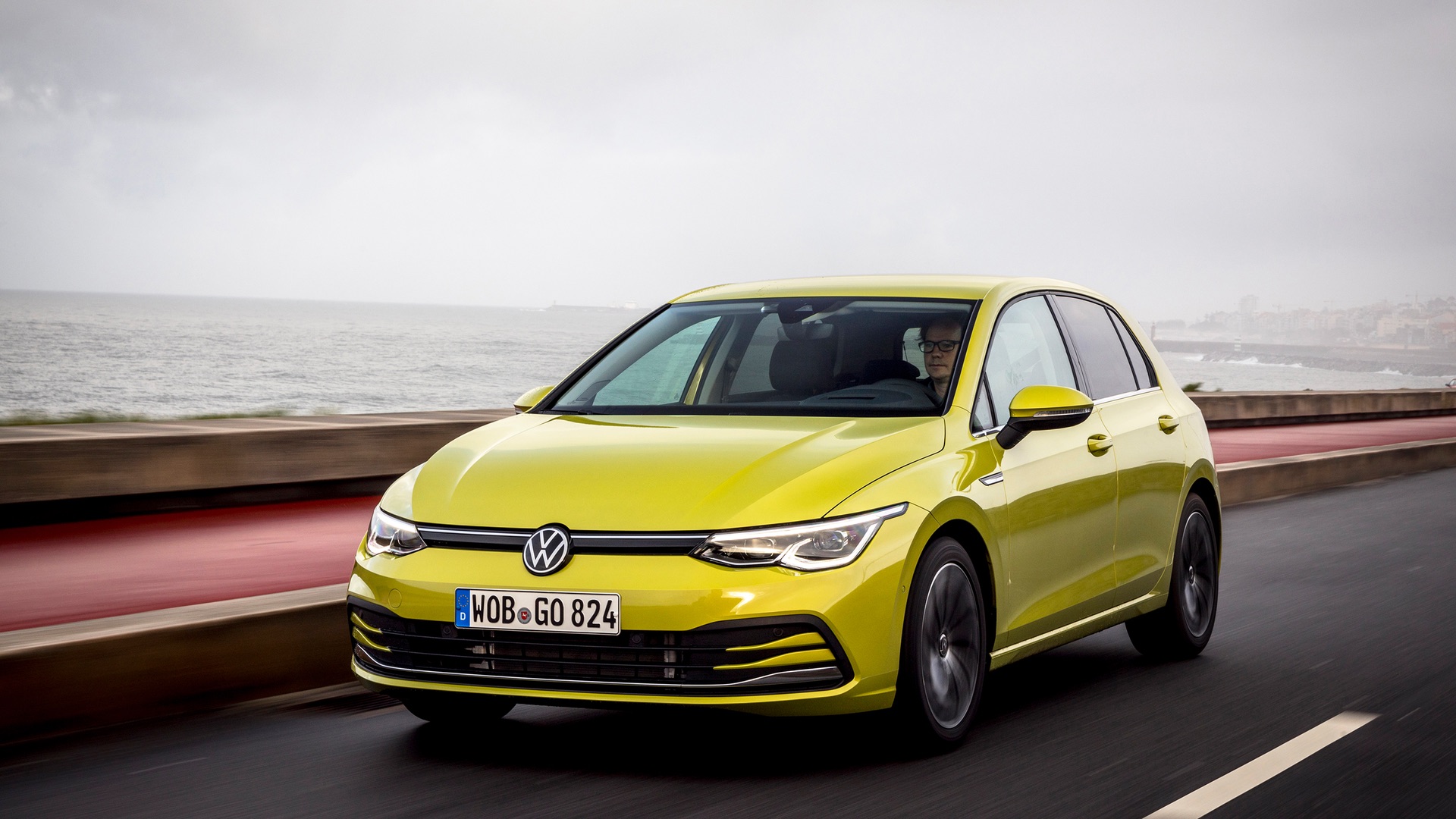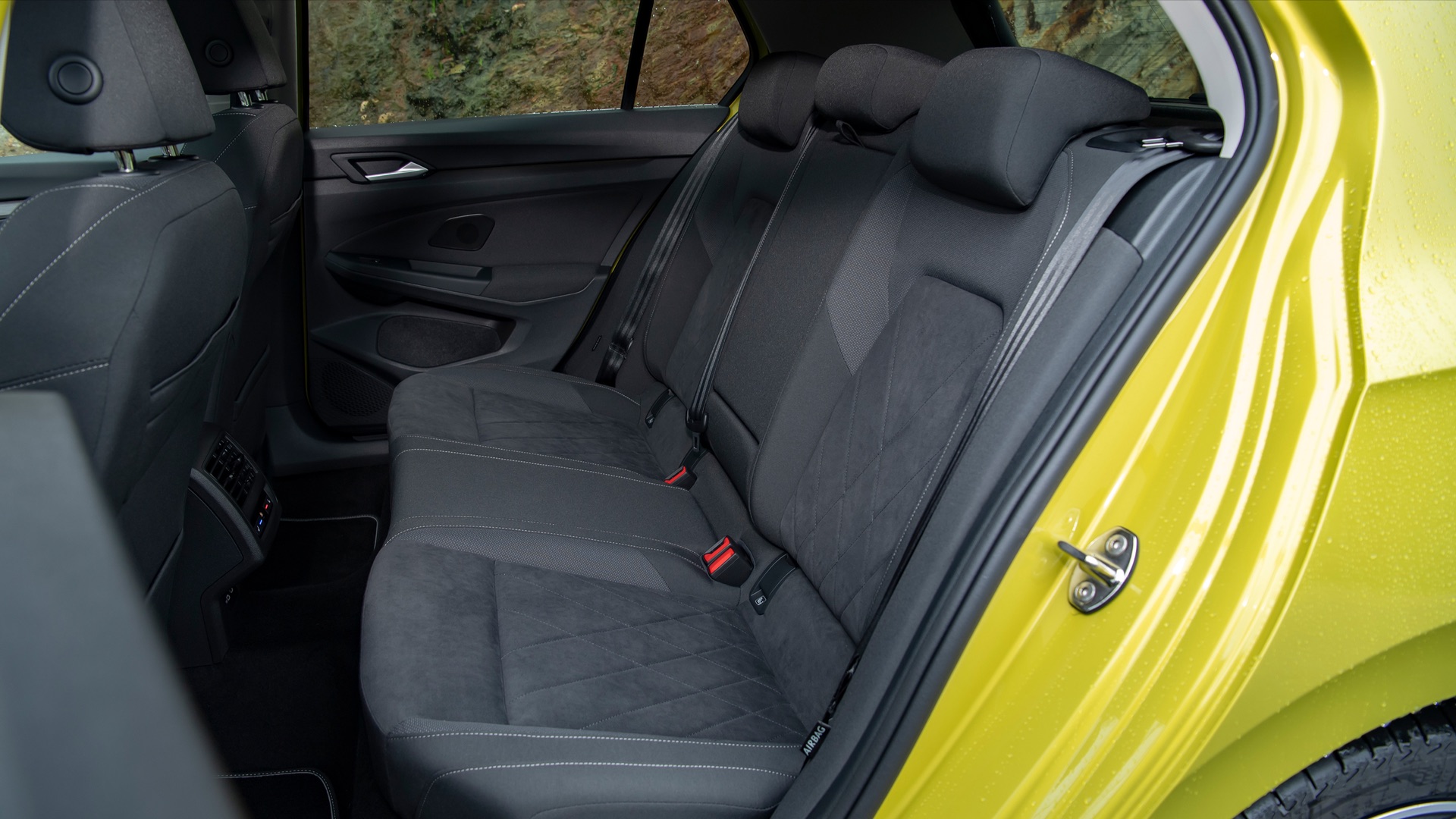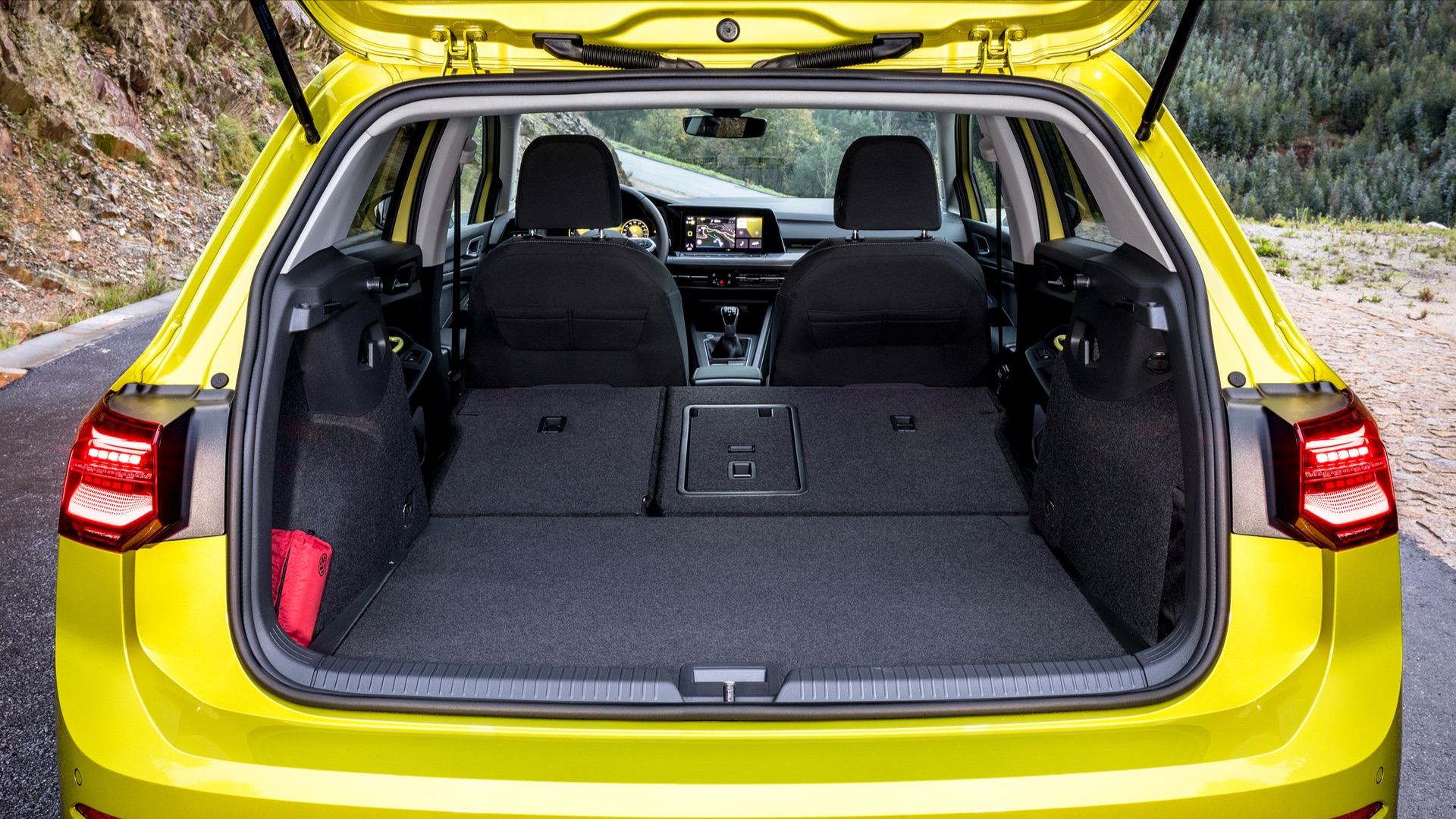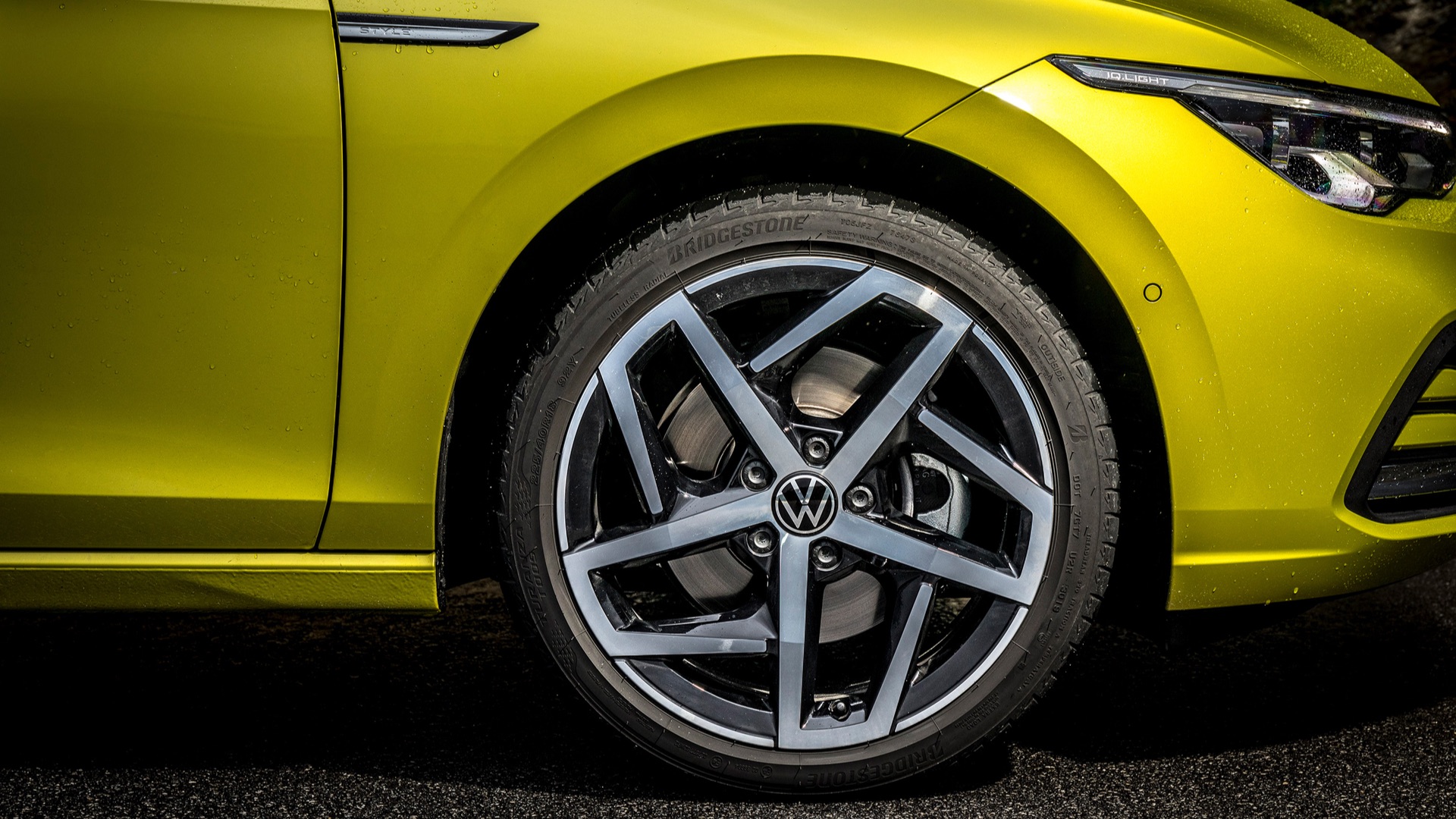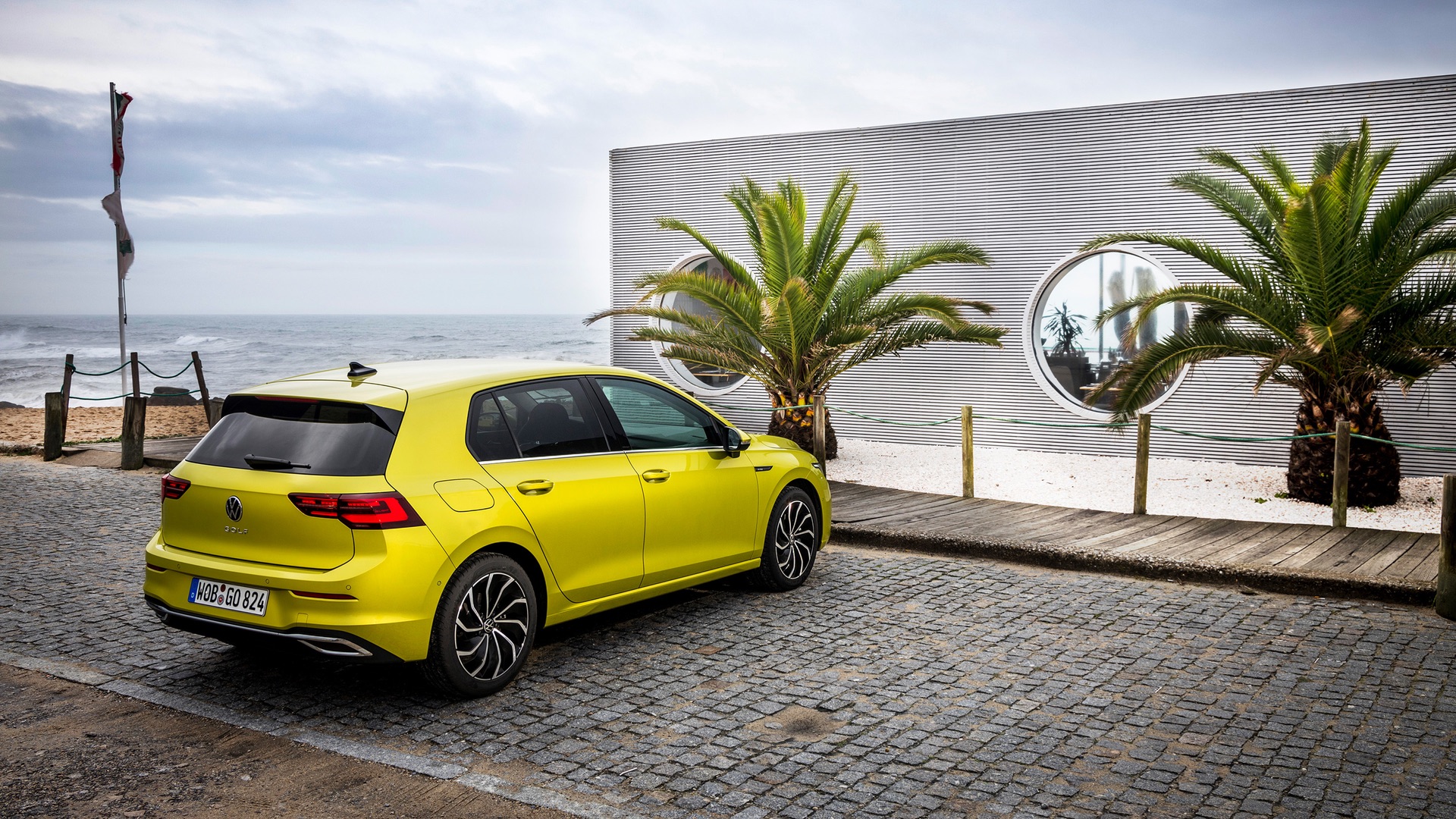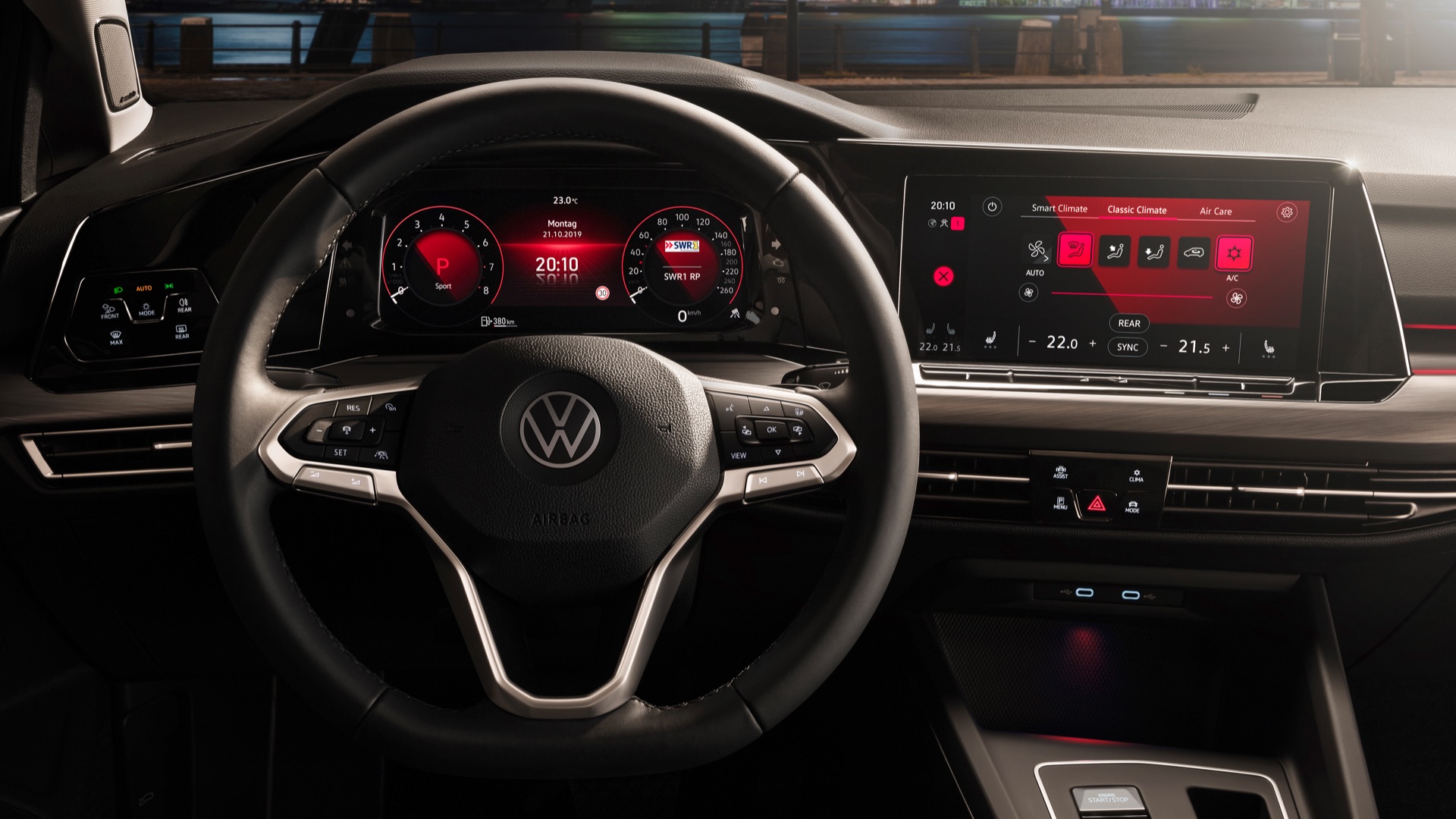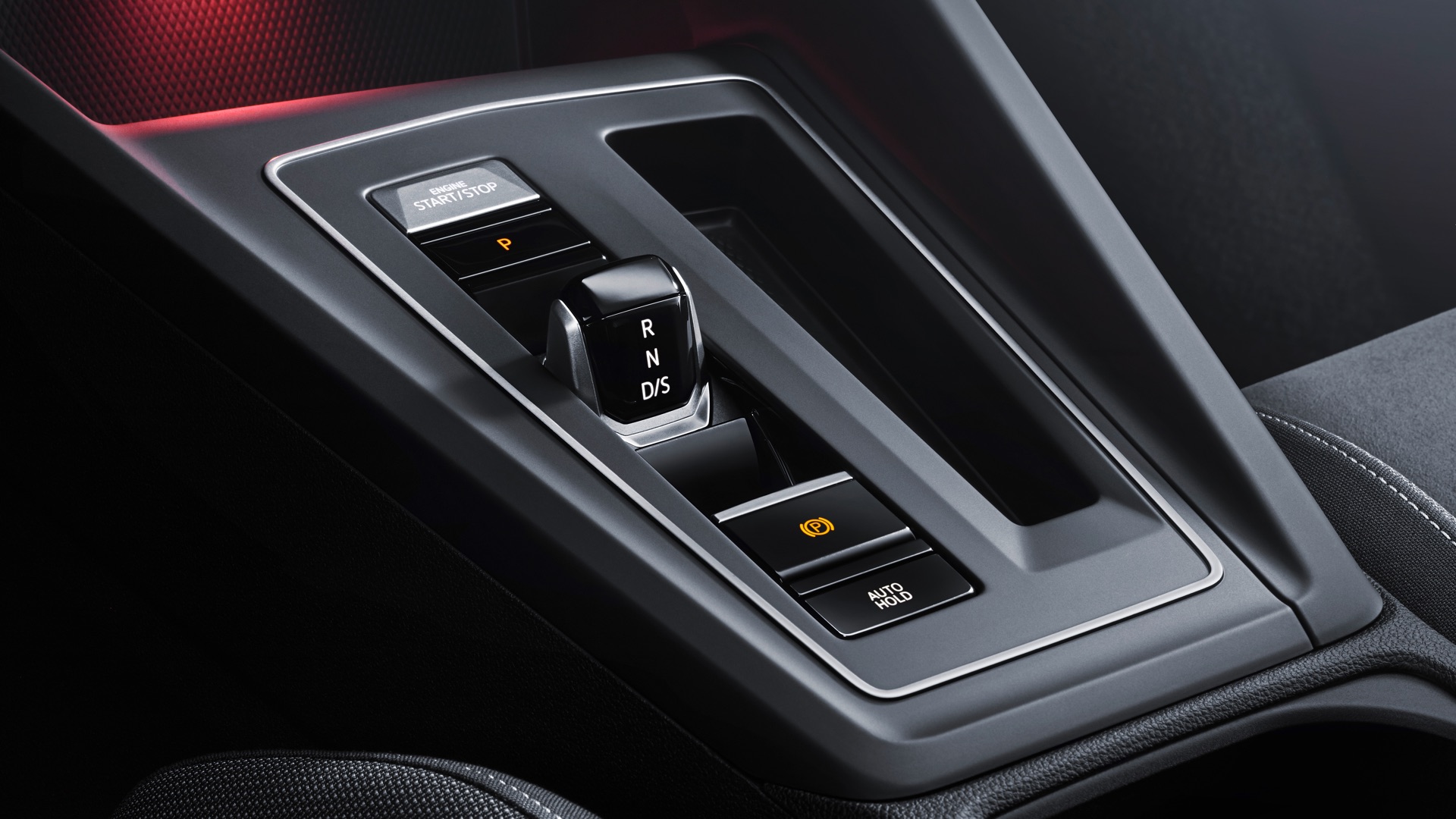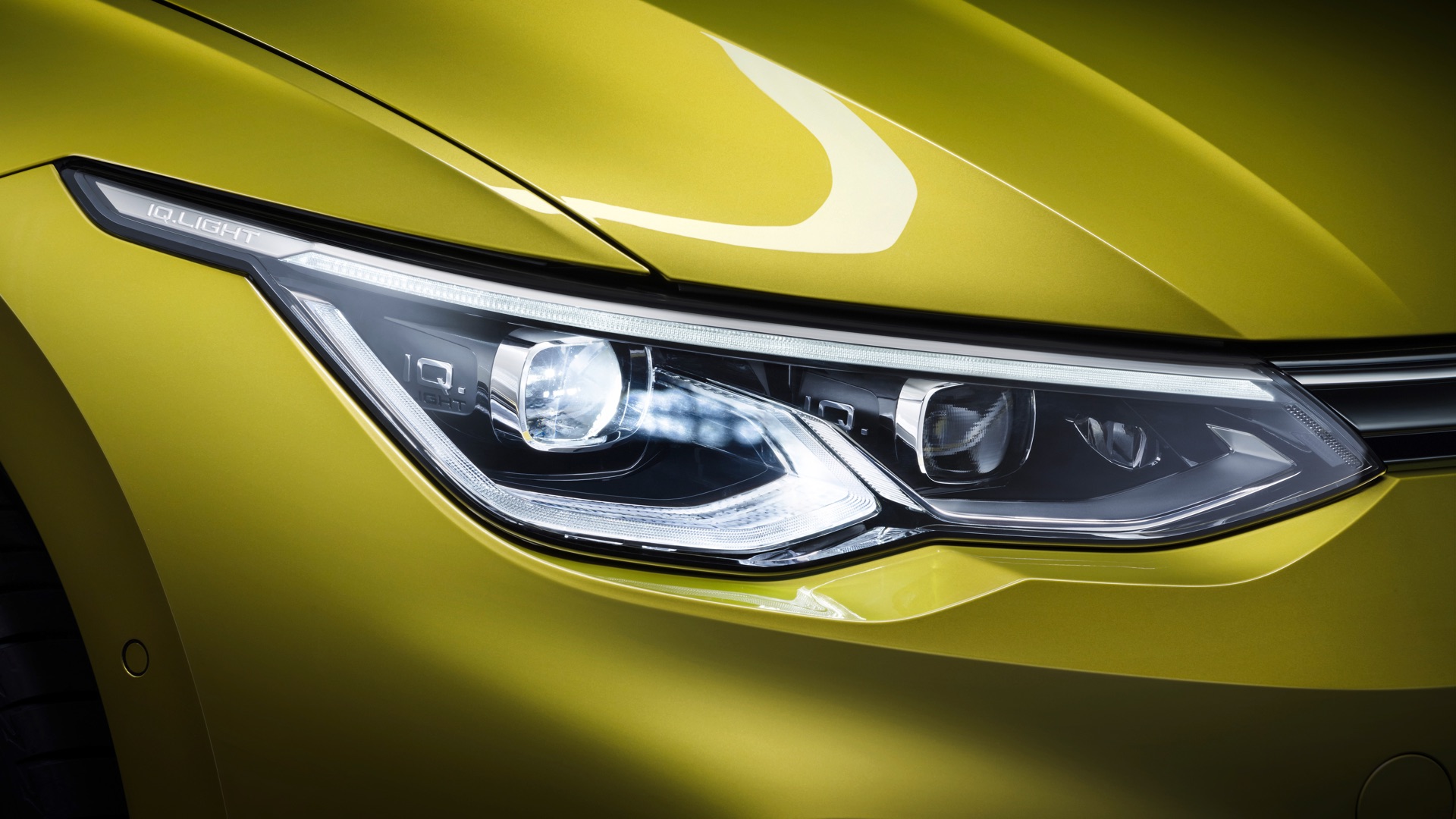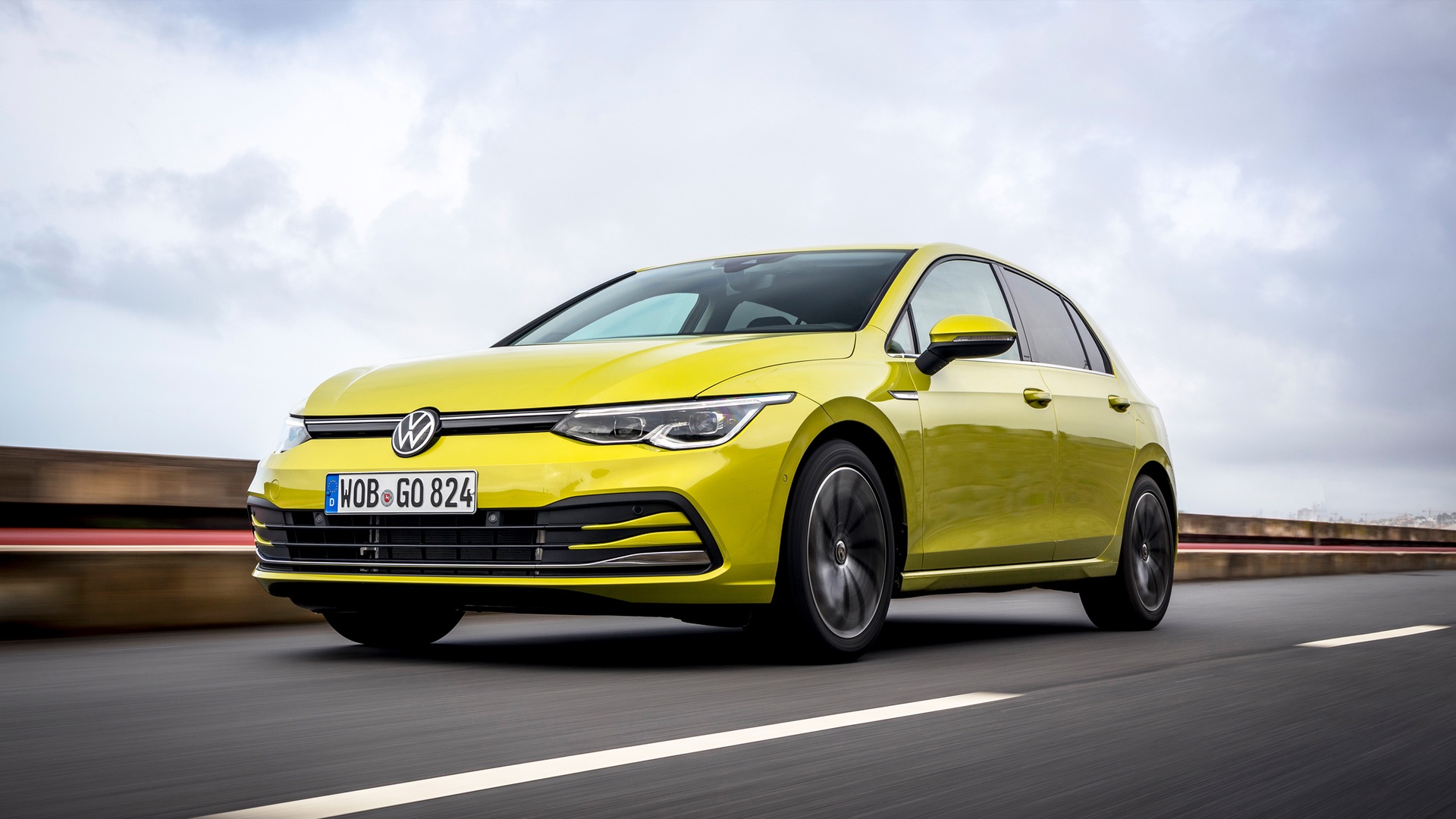
Back in September, Volkswagen revealed its ID.3 electric car. The Beetle, we were told, was ID.1 – the original ‘people’s car’ and beating heart of the brand – while the subsequent Golf was ID.2. Now, as a new Golf is launched to the world, there’s a sense it’s already yesterday’s hero.
So it felt until I spent an hour with some VW engineers, at least. These guys, whose specialist subjects ranged from engines to autonomous driving tech, still take the Golf very seriously. And rightly so: since 1974, more than 35 million have been sold. Somebody, somewhere, buys a new Golf every 40 seconds.
The ID range and its ‘new, dynamic era in the world of e-mobility’ may be coming, but the Golf hasn’t stood still. Indeed, this is the most radical, forward-thinking version of Das Auto yet. Not that you realise it at first…
The Golf club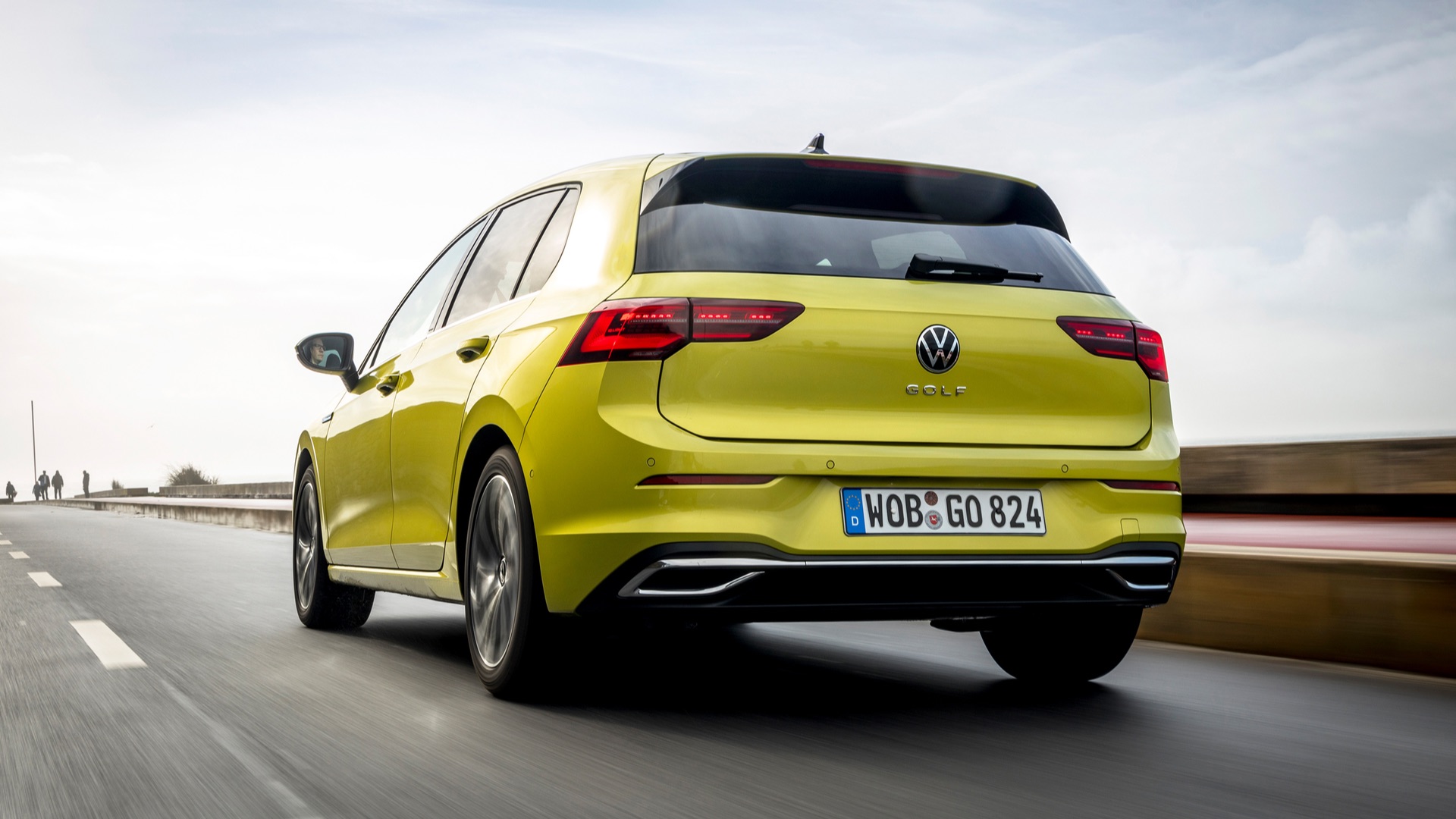
Arriving in Portugal, I see the Mk8 Golf lined up alongside all seven previous generations. It looks a chip off the old block. Details have changed, such as the swoopy LED headlights and spot-the-difference VW logo, but the confident creases, kinked C-pillar and hewn-from-solid silhouette are instantly familiar.
In fact, the Golf uses the same ‘MQB’ platform as the outgoing model, so its wheelbase is identical. Overall, it’s a modest 29mm longer, 10mm wider and 4mm taller. Interior space is claimed to be ‘practically unchanged’.
New Golf arrives in the UK in February, with the estate, GTI, GTI TCR, GTD and R all following later next year. pic.twitter.com/DD0SAamDDZ
— Tim Pitt (@timpitt100) December 3, 2019
Like most mid-size hatchbacks, the Golf is now five-door only – the three-door had dwindled to just five percent of sales. An estate version arrives in 2020, but the MPV-shaped Golf SV won’t be replaced. The arrival of the genre-busting T-Roc Cabriolet makes a drop-top look unlikely, too.
So far, so uneventful. Still, you can hardly blame design boss Klaus Bischoff for playing safe with a best-seller. He describes the Golf “an indicator of the present” that helps “millions of people [with] feeling at home”. One can only assume his interior design team missed the memo.
Crazy Golf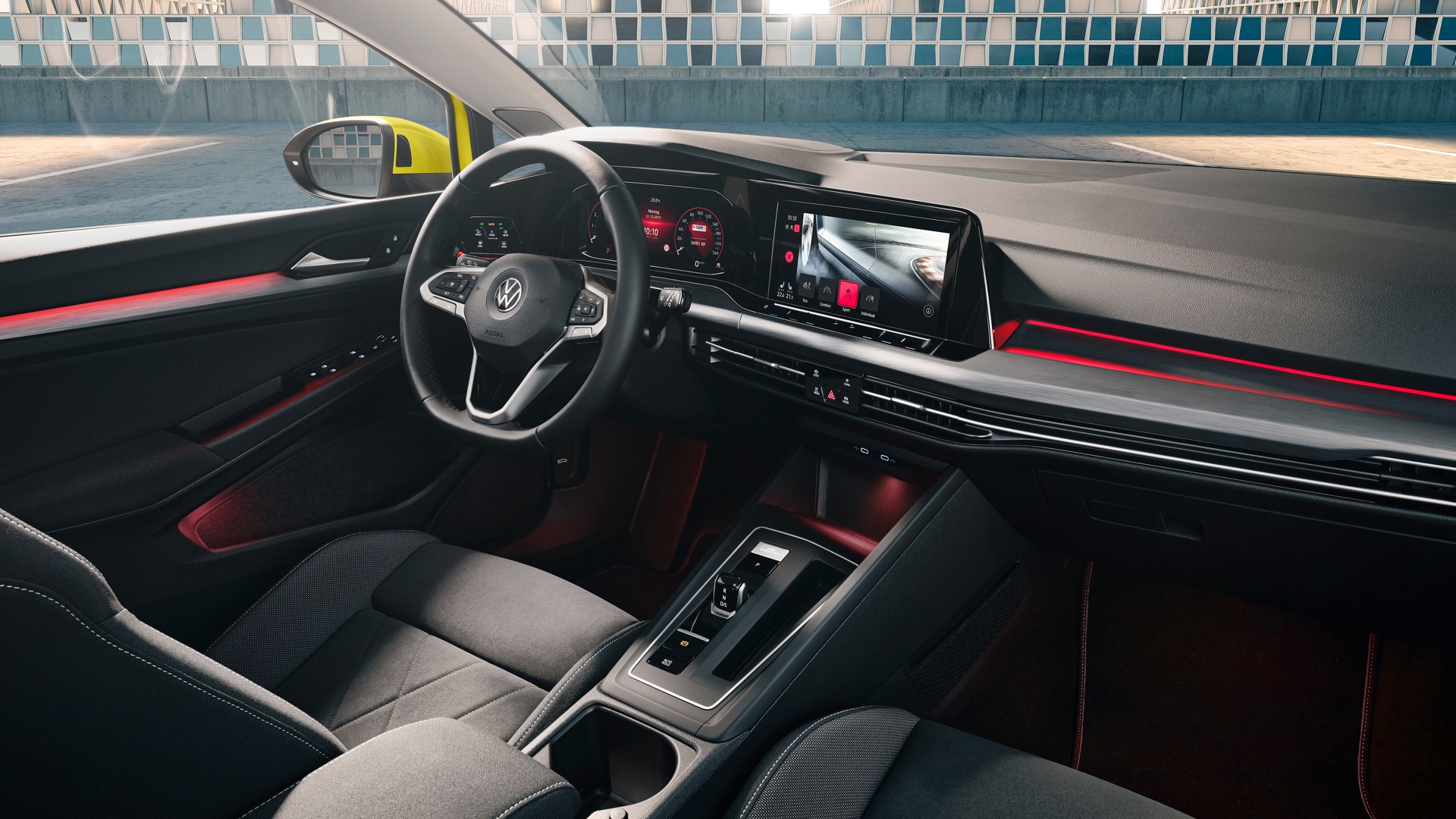
Inside, the new Golf has more in common with the ID.3 than its Mk7 predecessor. Volkswagen calls it a ‘digitalised workplace’ – and while it’s brimful of showroom appeal, learning your way around does initially feel like work.
Front-and-centre is the new Innovision digital dashboard, which has few physical buttons. A 10-inch central screen is standard in the UK (other countries get an 8.25-inch version), flanked by touch-sensitive sliders for heating/cooling and audio volume. The process is rather like swiping the screen of a smartphone.
You can also use gesture control for some functions, such as waving your hand to move between menus. Plus there’s voice control with integrated Amazon Alexa: say “Hello Volkswagen” to call up a song from your playlist, turn up the heating or find a nearby petrol station.
Ambient lighting is another feature that has filtered down from loftier cars. Pick from 32 colours or choose one of five ‘moods’: Infinity, Eternity, Euphoria, Vitality and Desire. Don’t choose the latter for a first date.
Putters and drivers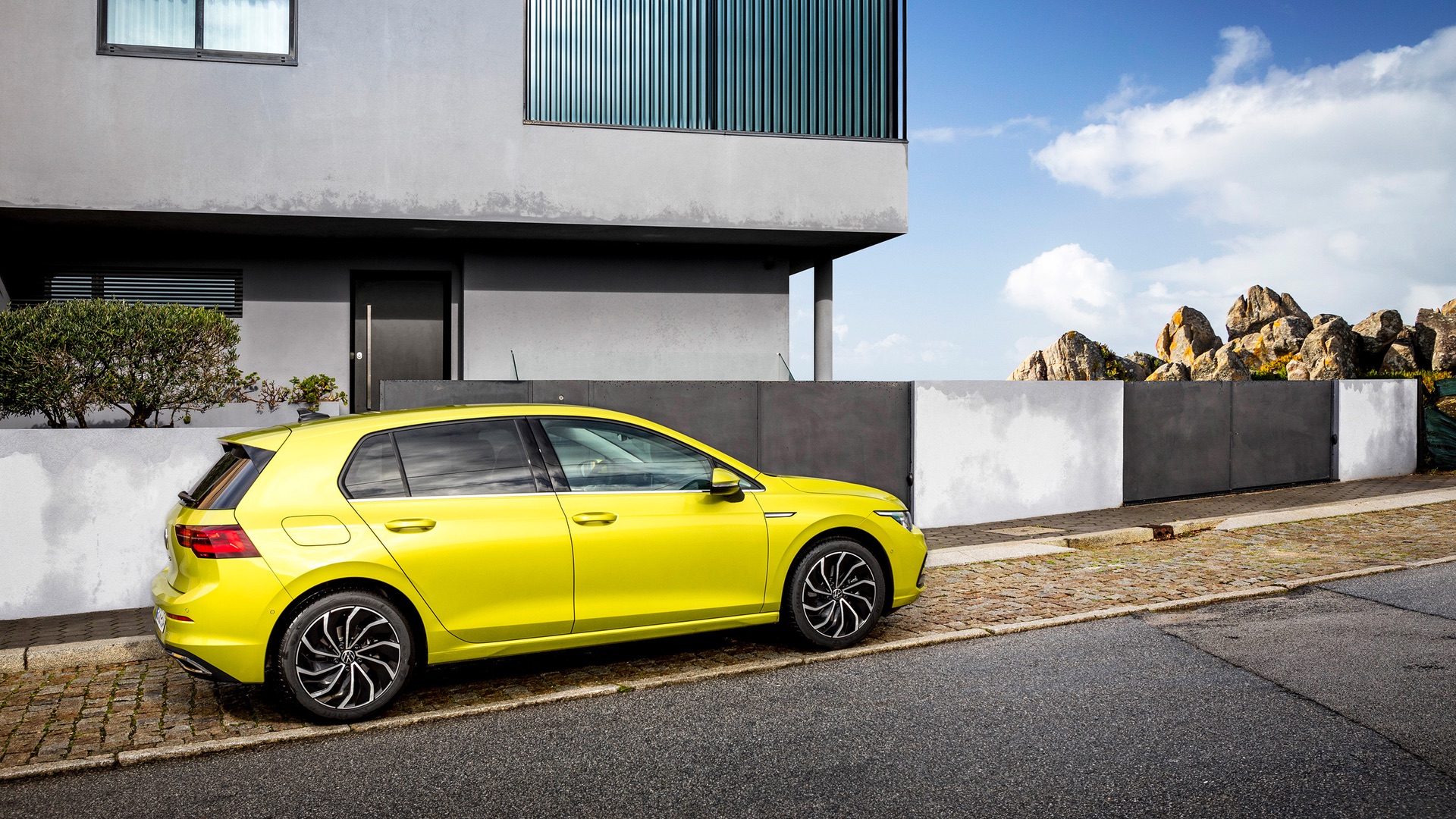
If all this sounds like the result of too many macchiatos at a marketing meeting, be reassured to know the Golf’s engines are steadfastly sensible. At least until the full suite of performance models – GTI, GTI TCR, GTD, GTE and R – arrive later in 2020.
The line-up at launch comprises 1.5 TSI four-cylinder petrol (130hp or 150hp) and 2.0 TDI diesel (115hp or 150hp), with the 1.0-litre TSI three-cylinder petrol (90hp or 110hp) following soon afterwards. A 48v eTSI mild-hybrid system, which recuperates braking energy to save fuel, is available on 100hp, 130hp and 150hp petrol engines, but only with the seven-speed DSG automatic gearbox. Your other choice is a six-speed manual.
New Volkswagen Golf has five ‘themes’ for the ambient interior lighting.
We’ve gone for Euphoria, which feels a bit OTT for a Tuesday afternoon. pic.twitter.com/c3jgXGAS9G
— Tim Pitt (@timpitt100) December 3, 2019
Details of the sportier versions are scarce, but we know the GTE plug-in hybrid will develop 245hp, a sizeable leap from 204hp in the Mk7. There won’t be a fully electric Mk8, as that box is ticked by the ID.3. However, Volkswagen has given the existing e-Golf a stay of execution until its new EV fully commences production.
As for trim levels, the structure now mirrors the German market, starting with ‘Golf’, then rising via Life and Style to top-spec R-Line. At the time of writing, UK equipment levels and prices had yet to be confirmed.
Time to tee off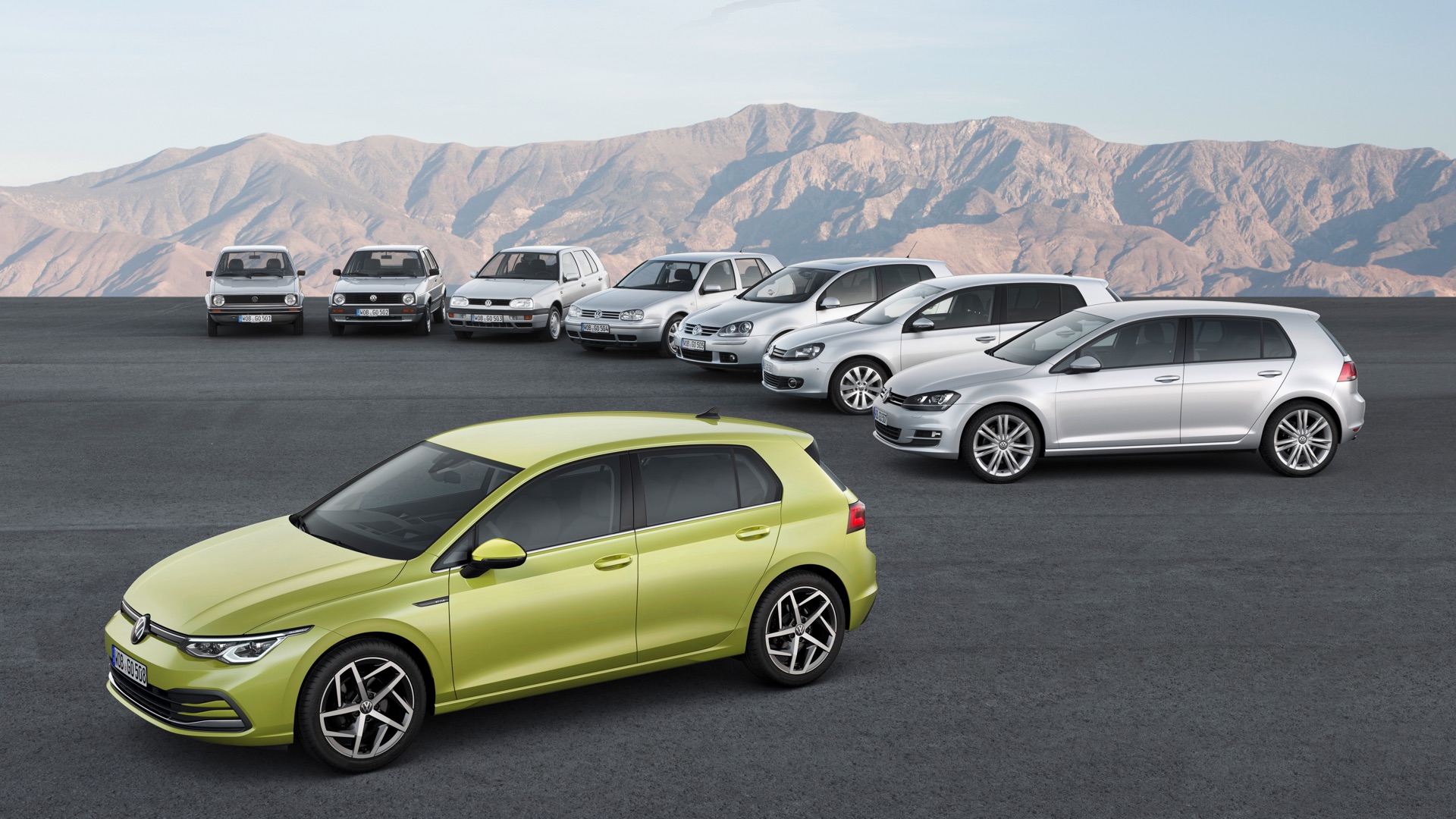
My first instinct is to jump into the flawless Mk1 Golf and screech away in a cloud of hydrocarbons. However, I have a job to do, and the Mk8 awaits. Besides, it’s December and the new car has a proper heater. Heated steering wheel and seats, too.
I start in a 1.5 TSI petrol in Life trim with a manual ’box, predicted to be the best-selling version in the UK. As for the vivid Lime Yellow paint, that will be less common. More’s the pity.
As ever, the Golf feels impeccably well assembled – insert cliché about Germanic build quality here – although there are some plastics that wouldn’t pass muster in, say, a Mercedes-Benz A-Class. The unlined glovebox, which causes loose items to rattle around, also smacks of penny-pinching.
The firmly padded seats, with an optional massage function, are very comfortable, and finding a good driving position is easy. The digital dials are also clear, augmented in some models by a head-up display (which projects essential driving data, such as your speed, onto the windscreen). Peering out over the plunging bonnet, I ease out the light clutch and I’m away.
Fore to the floor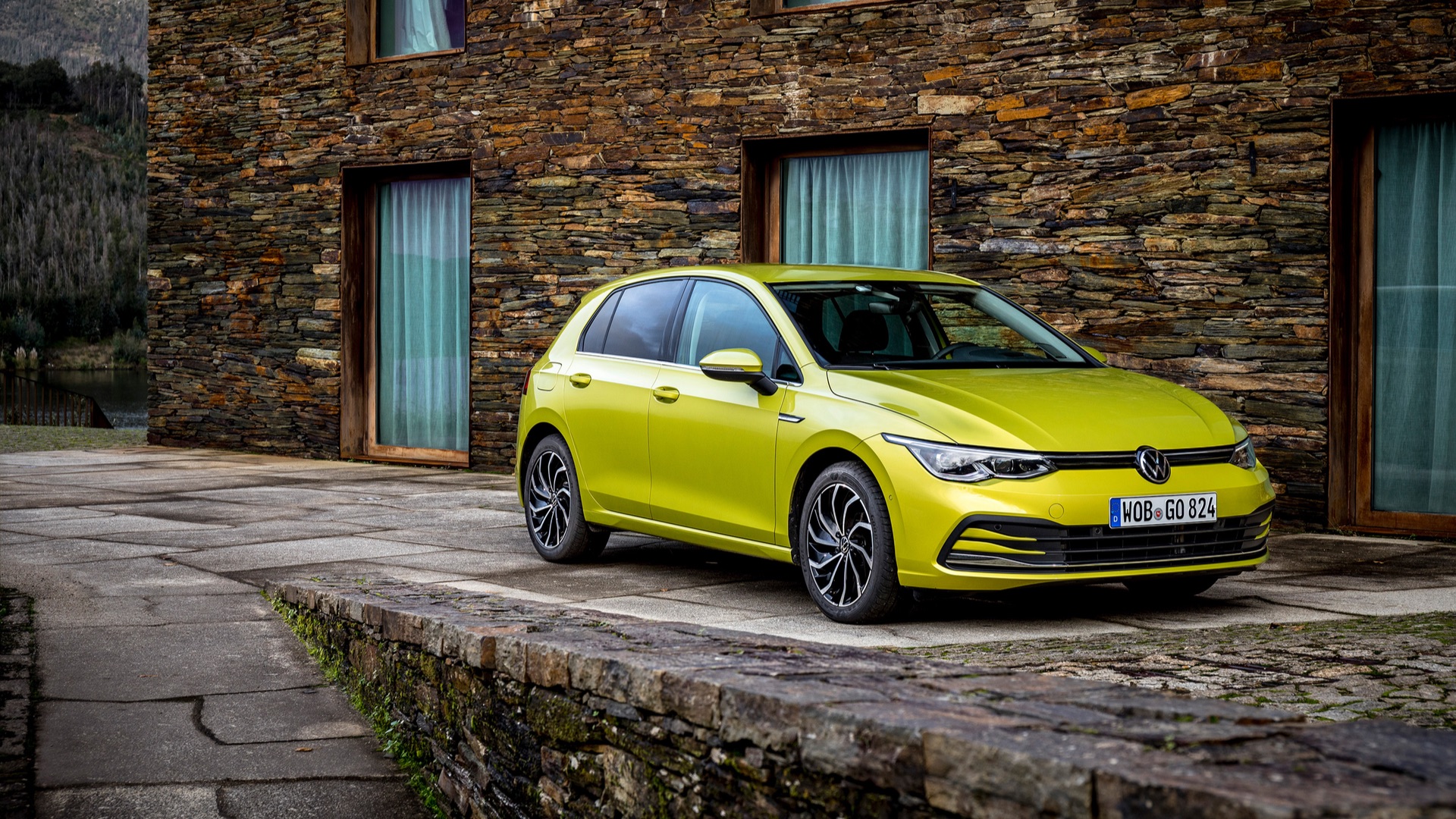
The turbocharged 1.5-litre engine is no ball of fire, but it revs eagerly and propels the Golf to 62mph in 8.5 seconds and 139mph flat-out. Its Mk7 equivalent managed fuel economy of 54.3mpg and CO2 emissions of 116g/km, so expect similar figures when the Mk8 undergoes official WLTP tests soon.
Where the TSI motor really impresses is refinement; it’s turbine-smooth, isolated to the point of being almost inaudible around town. At speed, this only serves to amplify wind roar from the chunky door mirrors, although the Golf remains an able and long-legged cruiser. Countless development miles on Germany’s autobahns have clearly paid off.
The manual gearbox feels well-oiled and easy to operate. It’s likely to be around £1,400 cheaper than the DSG auto upfront, and require less maintenance longer-term. However, that’s only a concern if you keep the car beyond its three-year UK warranty (also the usual term of a PCP finance deal).
Par for the course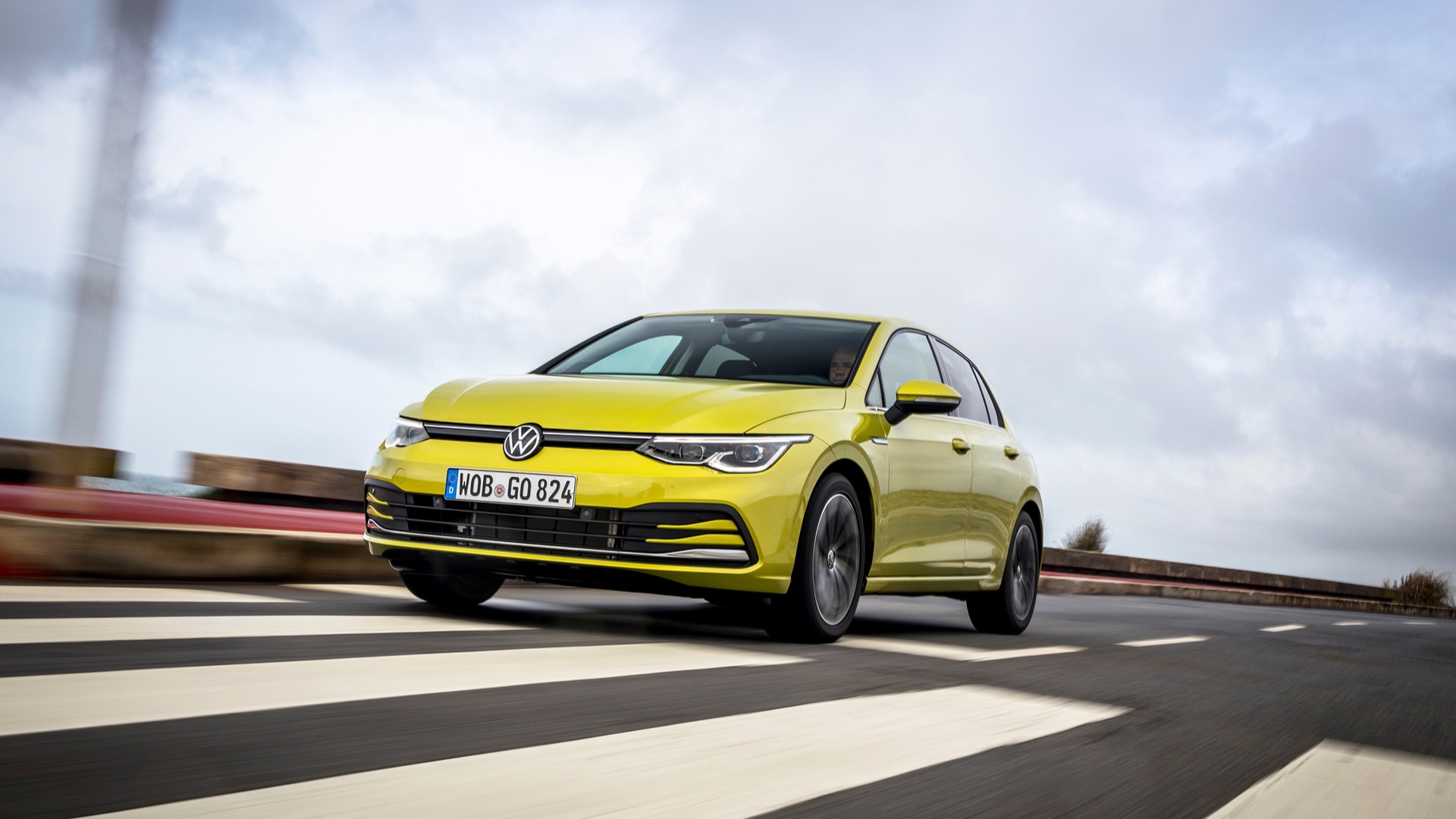
The VW’s chassis is also geared towards easygoing comfort. Its steering, light and accurate, filters out the fingertip feedback some drivers will crave in favour of calm control. Its suspension also strikes a good balance between absorbing bumps and resisting roll.
On a series of mountain switchbacks near Porto, the car was genuine fun: its well-weighted controls and unruffled composure helping me chase down locals in careworn Renault Clios, many of whom treated the road like a rally stage.
A few past masters at the Golf 8 launch.
Volkswagen’s best-seller is 45 this year – with 35 million sales and counting. A new Golf is sold somewhere in the world every 40 seconds. pic.twitter.com/jVJfa38CIb
— Tim Pitt (@timpitt100) December 3, 2019
There are some caveats, though. All the launch cars had multi-link rear suspension, while cheaper models make do with a simpler torsion beam (also true for the Focus). P;us all were fitted with Dynamic Chassis Control (DCC), which includes continuously variable dampers and four driving modes: Eco, Comfort, Sport and Individual.
Switching to Sport isn’t transformative, but it does add extra heft to the steering and more zing to the throttle response. Granted, the Golf isn’t as lively or engaging as a Ford Focus, but wasn’t it ever thus? The essential rightness of the recipe bodes well for the GTI and R.
Into the rough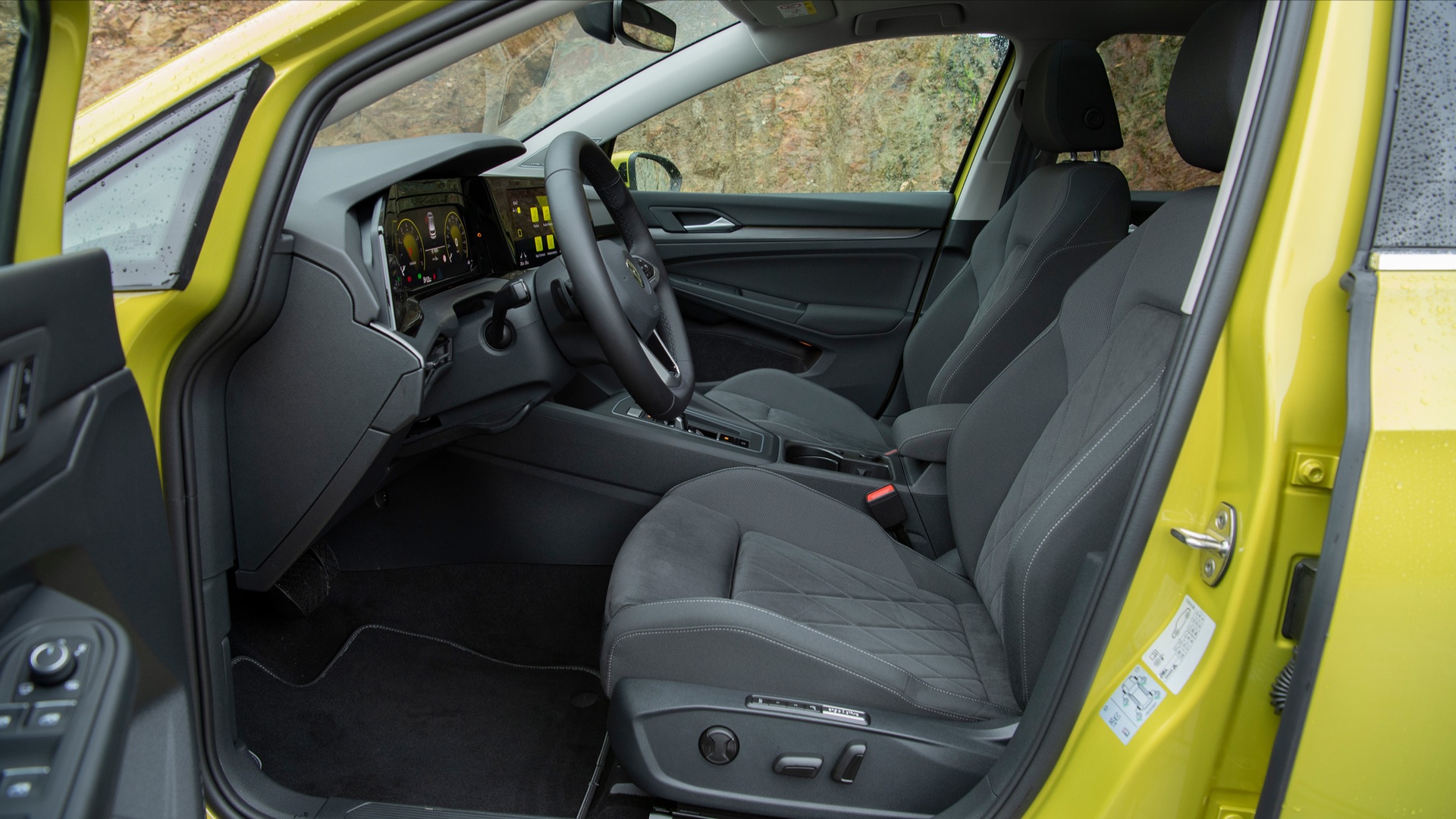
I then swap into a 150hp diesel with an automatic transmission, also in Lime Yellow. This 2.0-litre TDI offers markedly more torque – 266lb ft at 1,750rpm, versus 184lb ft at 1,500rpm in the 150hp petrol – which is immediately apparent on the road. The instant oomph, combined with seamless shifts from the DSG ’box, make for a compelling combination.
Preferable to the petrol? Well, the TDI is certainly more vocal, although its subtle snarl is a world away from clattering diesels of old. Inevitably, it will also be more expensive to buy – probably by around £1,200 if Mk7 prices are an accurate guide.
Nonetheless, for all the bad press about diesel (much of Volkswagen’s own making, of course), it’s certainly no poor relation. The 0.3 seconds it gives away from zero to 62mph is amply compensated for by mid-range muscle. Plus, what’s not to like about more miles per gallon?
Help or handicap?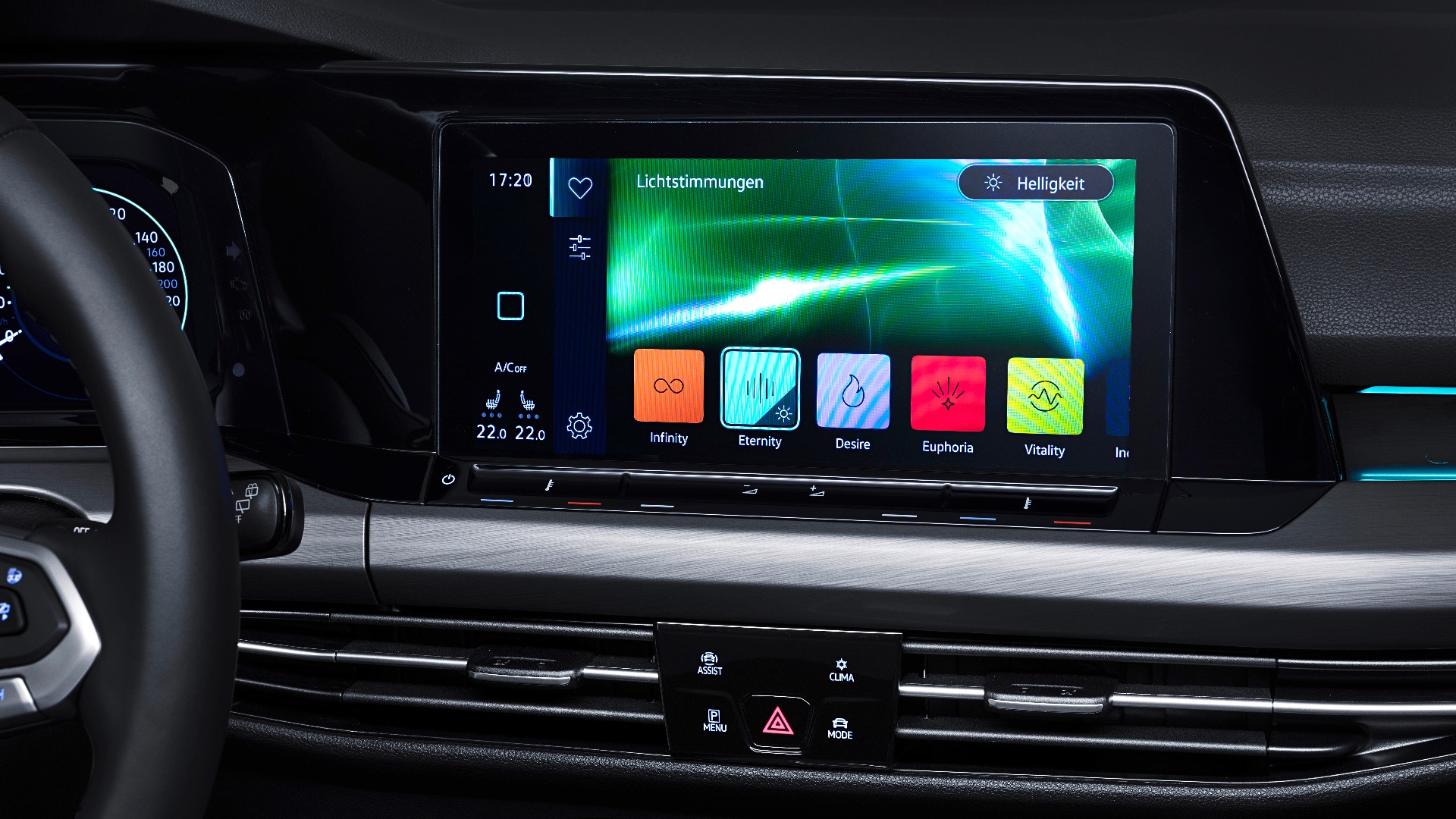
As for the Innovision cockpit, I’m not fully convinced. One thing I’ve always loved about the Golf – and I speak as a serial owner, with Mk1, Mk2, Mk4 and Mk5 models under my belt – is its no-nonsense approach to ergonomics. For its core audience, middle-aged and middle-class, the minimalist design and deference to touch controls may not be perceived as progress.
The slider for audio volume is a case in point. I found it only worked with a firm push, and I’d end up checking the screen for confirmation – thus taking my eyes off the road. Admittedly, there is a volume switch on the steering wheel, but that’s missing the point: technology should make things simpler. The same goes for the voice controls, which were hit-and-miss at best.
Perhaps I’m just old-fashioned. There is also much useful tech here. The optional matrix LED headlights, for example, are fantastic, actively dimming sections of the high beam so you don’t dazzle oncoming traffic. The new Car2X wi-fi function is clever, too; it allows the car to communicate directly with others nearby (only other Golfs at present, but the EU-standard tech is being trialled by other brands) in order to warn drivers of approaching hazards.
Hole-in-one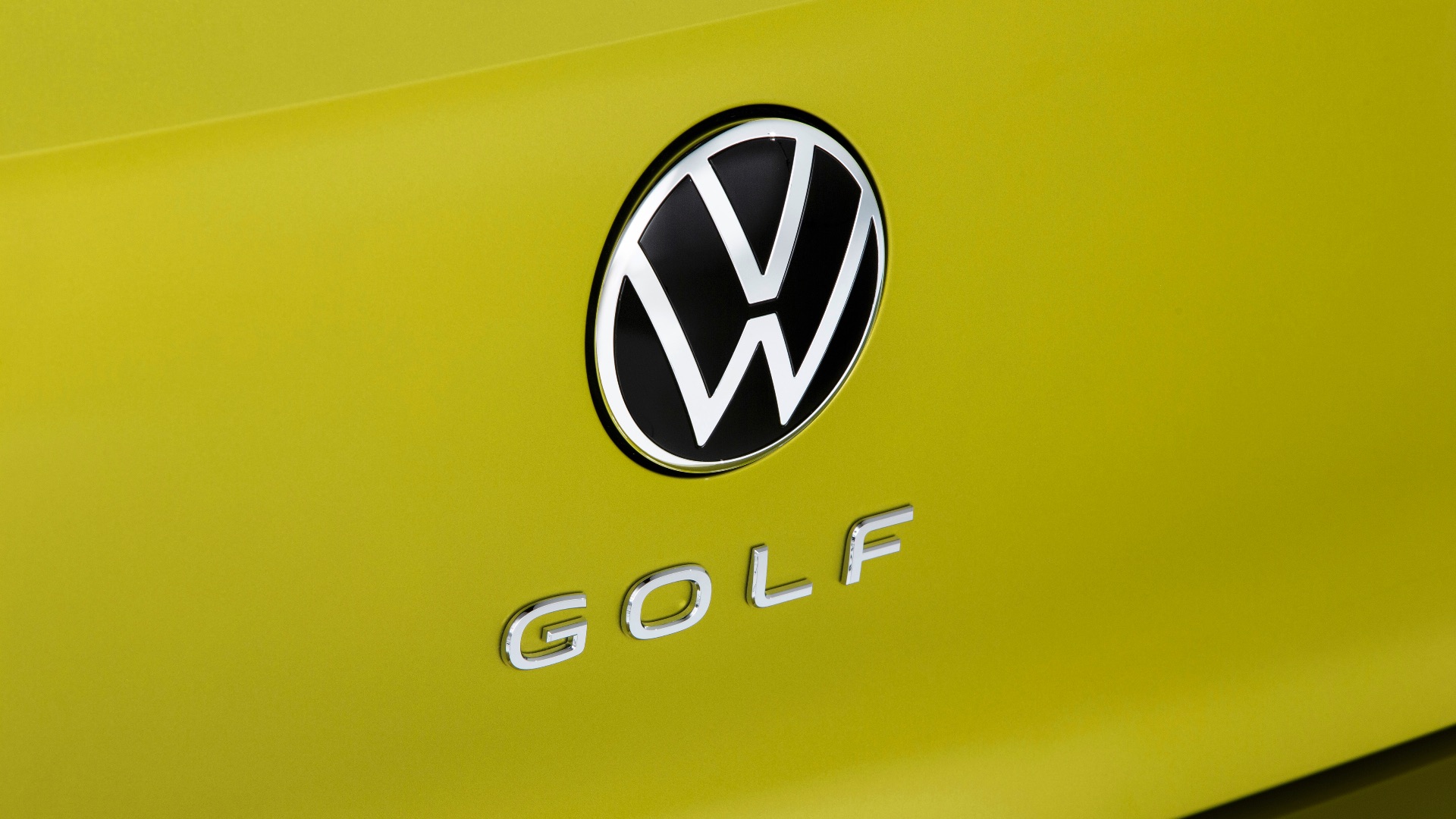
Brands within the Volkswagen Group seem to be steadily moving upmarket. Thus Skoda becomes more like VW, while VW edges closer to Audi. Where Bugatti goes next is anyone’s guess.
Prise those redesigned roundels off the Golf and it could easily be an Audi A3. Its interior has the requisite wow-factor and the technology sets new standards for a ‘mainstream’ hatchback. Build quality and refinement also measure up to premium rivals. Let’s just hope the Golf’s price doesn’t.
Much has changed, then, but the Golf still feels like the benchmark in its class. Its broad appeal and breadth of abilities make it the default ‘people’s car’ – for 45 years and counting. Don’t write this Volkswagen out of history yet.
2020 Volkswagen Golf 1.5 TSI: specification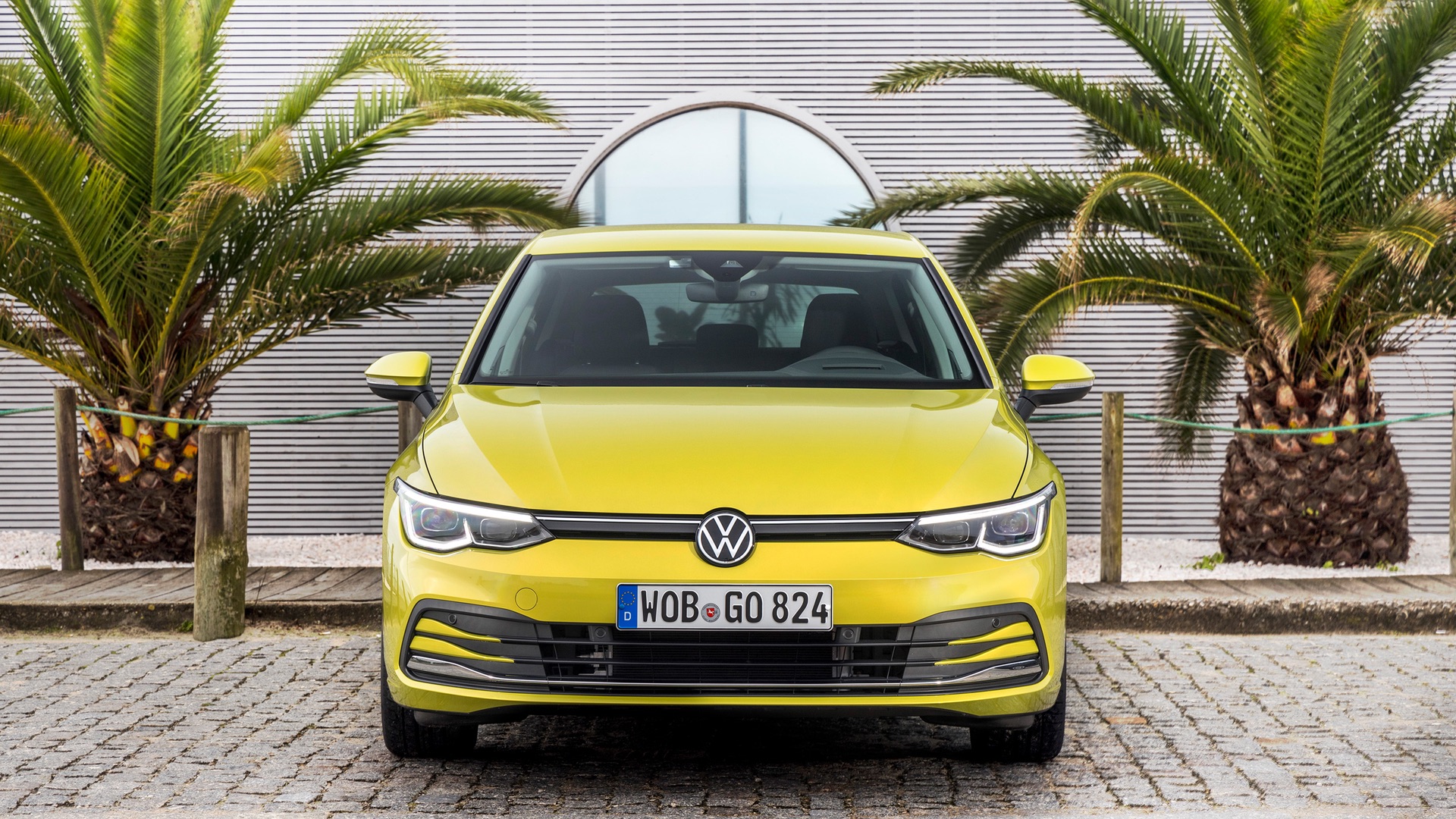
Price: TBC
Engine: 1.5-litre four-cylinder petrol
Transmission: Six-speed manual, front-wheel drive
Power: 130hp at 5,000rpm
Torque: 184lb ft at 1,500rpm
0-62mph: 8.5 seconds
Top speed: 139mph
Fuel economy: TBC
CO2: TBC
Length/width/height: 4,284/1,789/1,456mm
Boot size: 380-1,237 litres
On sale: February 2020
